Our Favourite Pollinator Plants for Earth Day
[/dfd_heading][dfd_spacer screen_wide_resolution=”1280″ screen_wide_spacer_size=”40″ screen_normal_resolution=”1024″ screen_tablet_resolution=”800″ screen_mobile_resolution=”480″ screen_normal_spacer_size=”40″ screen_tablet_spacer_size=”30″ screen_mobile_spacer_size=”20″]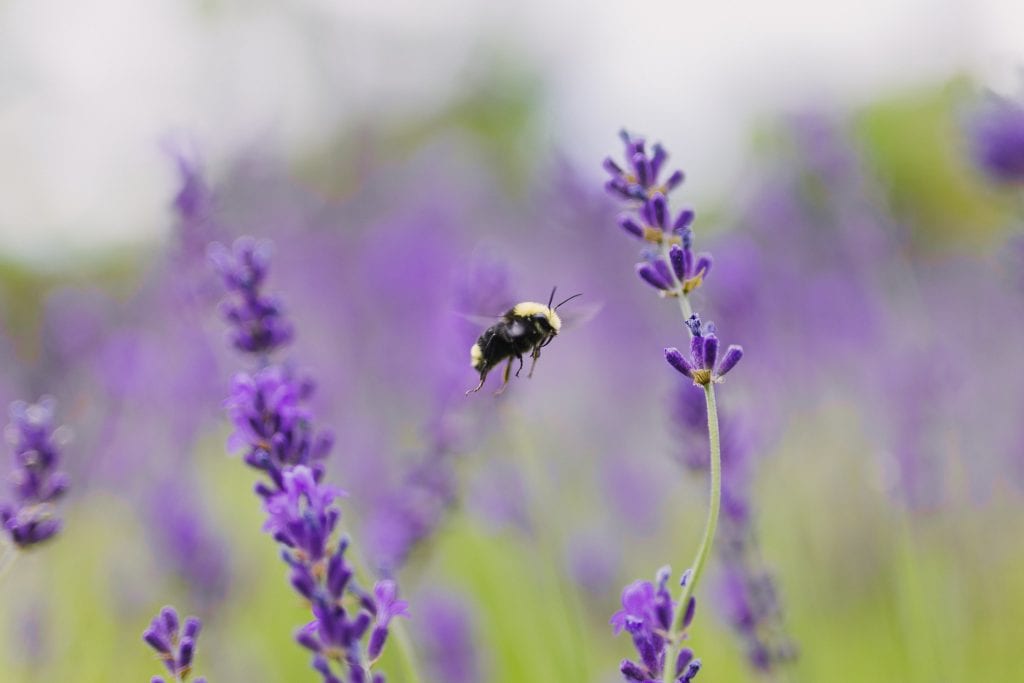
In celebration of Earth Day on April 22nd and the upcoming gardening season, we wanted to share some of our favourite native pollinator plants with you. We’ll also include some helpful resources for planning, sourcing and enhancing the sustainability of your garden this season.
But first, a little background on the importance of pollinators.
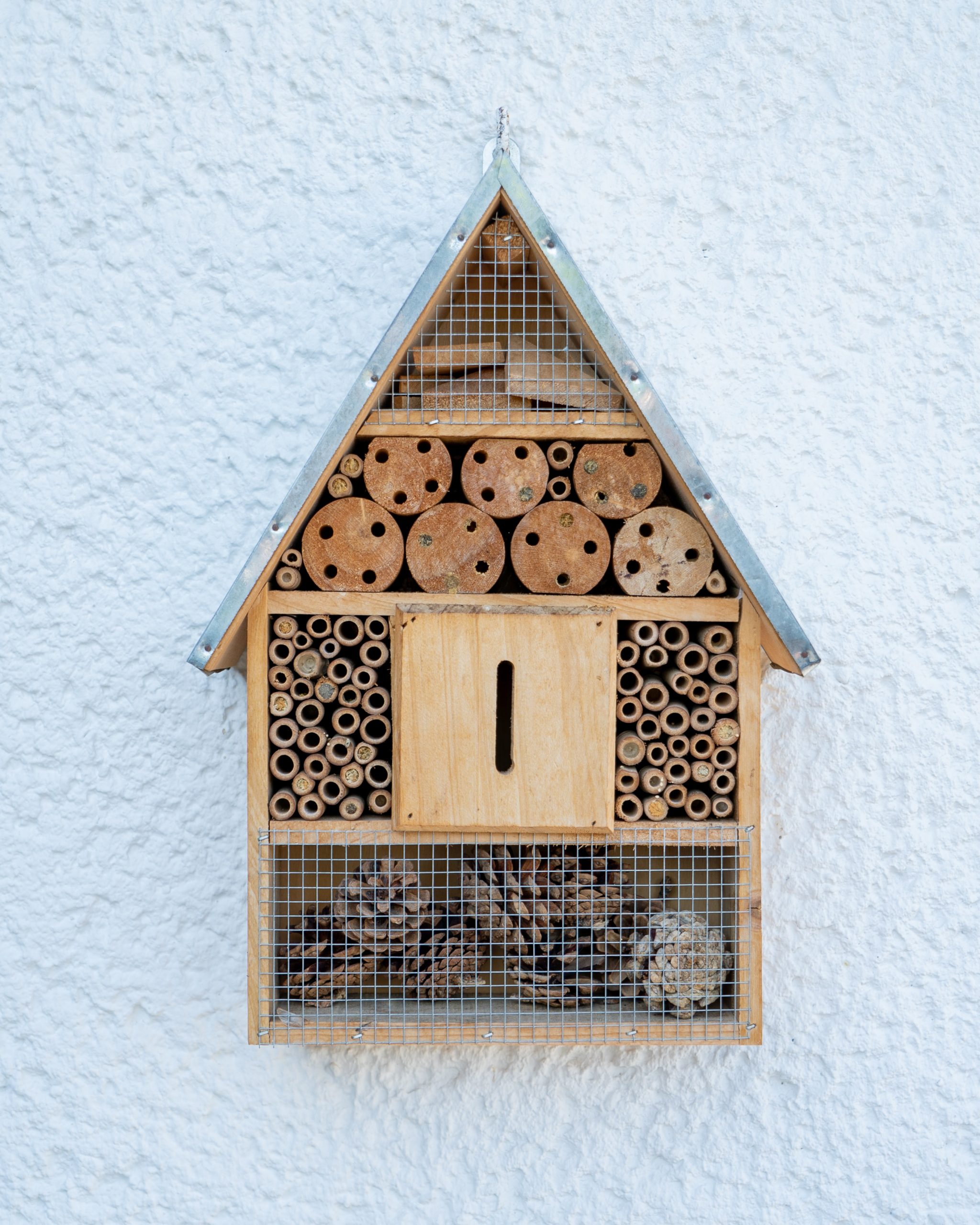
IMAGE – MIKA BAUMEISTER ON UNSPLASH
Pollinators & Why They Are Important
[/dfd_heading]When most of us think of pollinators, we often think of bumblebees and butterflies. While they are incredibly important pollinators, you might be surprised to learn that pollinators also include birds, bats, wasps, moths, flies, beetles and other small mammals.
As pollinators travel between flowers to drink nectar or feed off pollen, they transport pollen as they move and allow for plants to reproduce. This pollination process is essential for producing most fruit, vegetables and nuts as well as over ½ of the world’s oils, fibres and raw materials. They are also important to supporting a healthy ecosystem, cleaning the air, stabilizing soils, protecting us from severe weather and supporting other wildlife. In monetary terms, they contribute over $217 billion USD to the global economy.
In short, they are REALLY important.
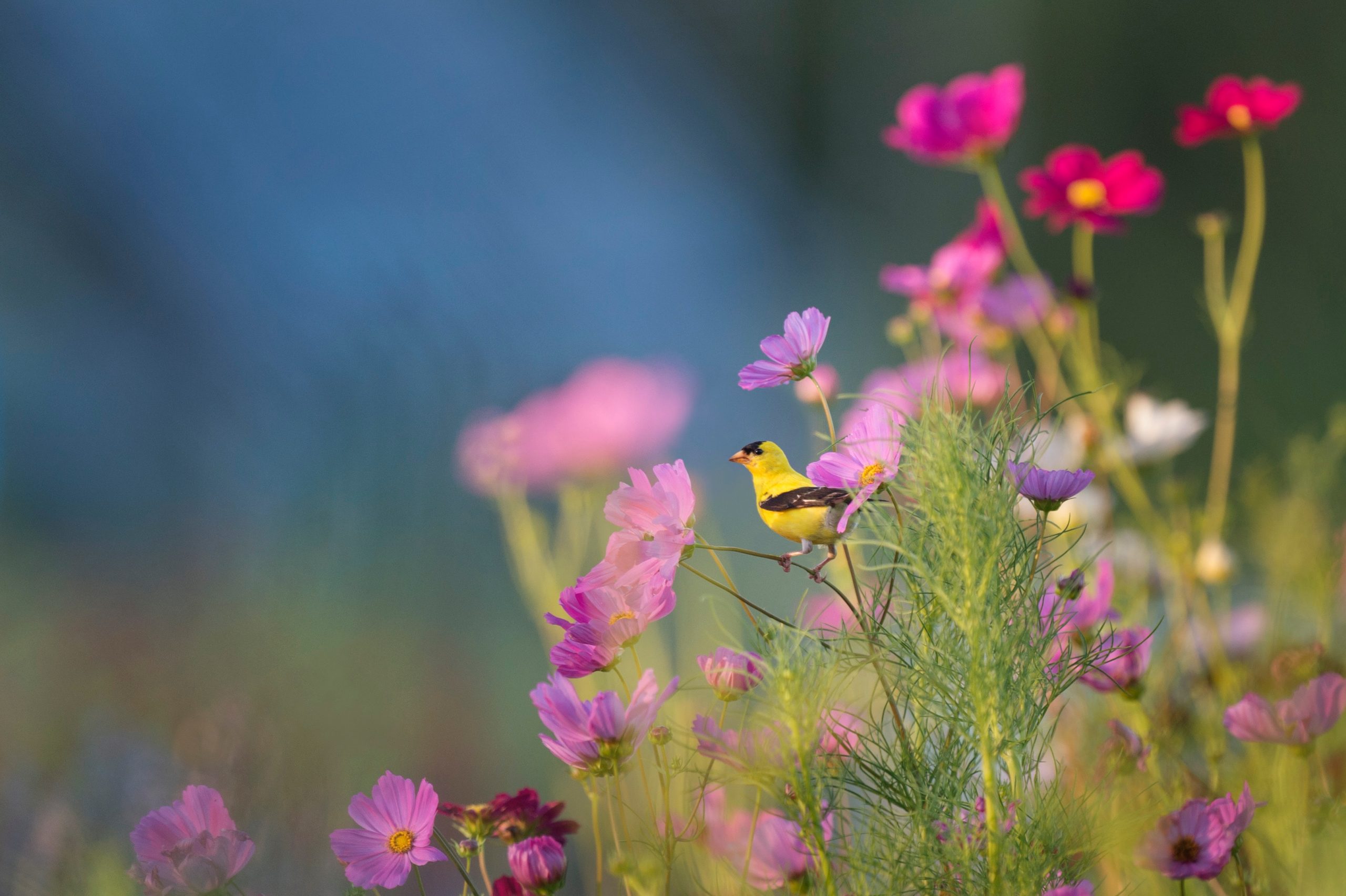


IMAGES – (CLOCKWISE FROM TOP)
RAY HENNESY, JOHN DUNCAN & CALVIN MANO ON UNSPLASH
Pollinators Are in Decline
[/dfd_heading][dfd_spacer screen_wide_resolution=”1280″ screen_wide_spacer_size=”20″ screen_normal_resolution=”1024″ screen_tablet_resolution=”800″ screen_mobile_resolution=”480″ screen_normal_spacer_size=”20″ screen_tablet_spacer_size=”10″ screen_mobile_spacer_size=”10″]Unfortunately, most of our pollinator populations are in decline and are considered to be at risk. This is attributed to a loss in feeding and nesting habitats, pollution, the misuse of chemicals (like pesticides), invasive species, disease and climate change.
What We Can Do
[/dfd_heading][dfd_spacer screen_wide_resolution=”1280″ screen_wide_spacer_size=”20″ screen_normal_resolution=”1024″ screen_tablet_resolution=”800″ screen_mobile_resolution=”480″ screen_normal_spacer_size=”20″ screen_tablet_spacer_size=”10″ screen_mobile_spacer_size=”10″]One way to help is by adding native pollinator plants to your garden! Selecting mostly native pollinator plants means that you’ll be providing food and habitat for our native pollinator species.
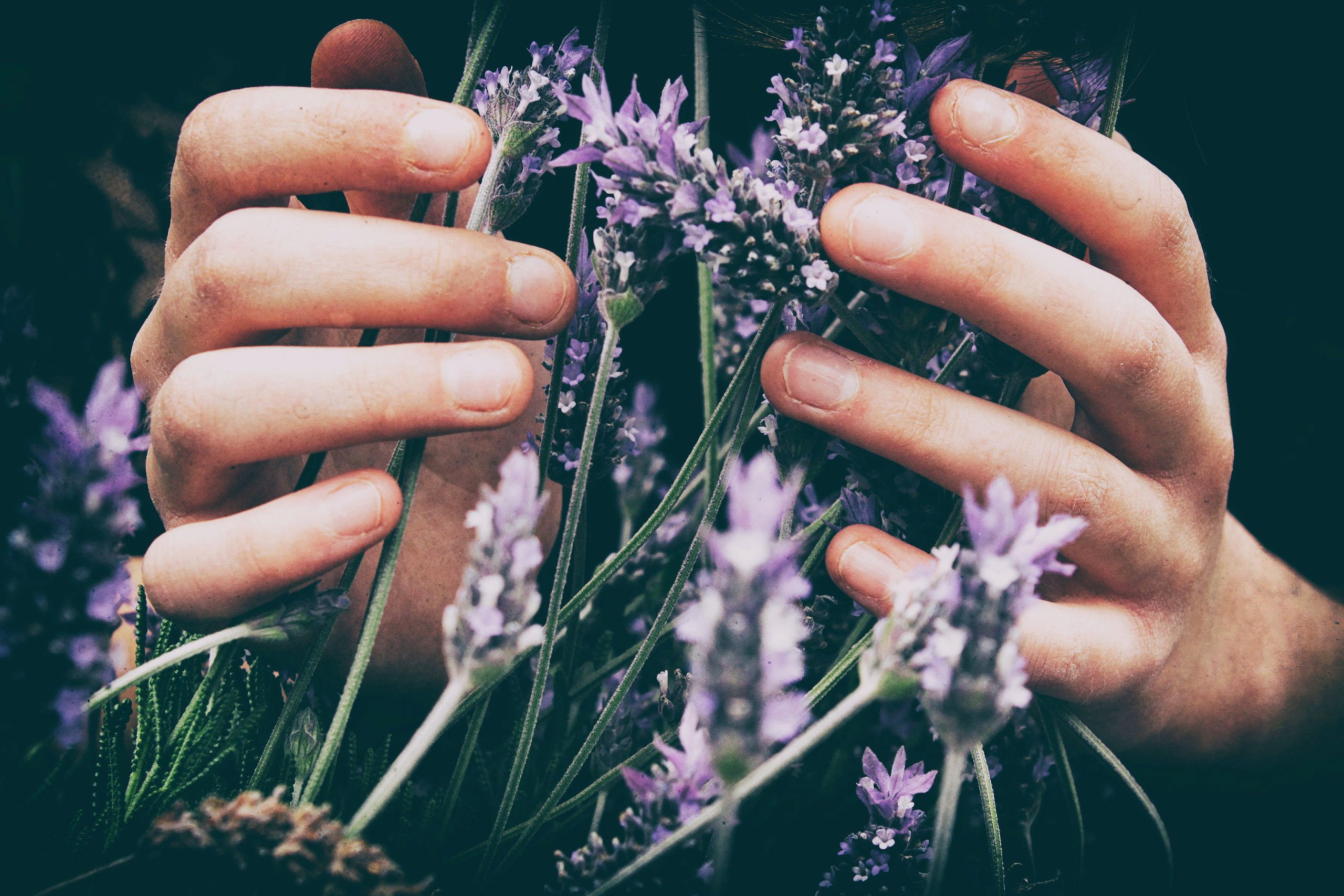
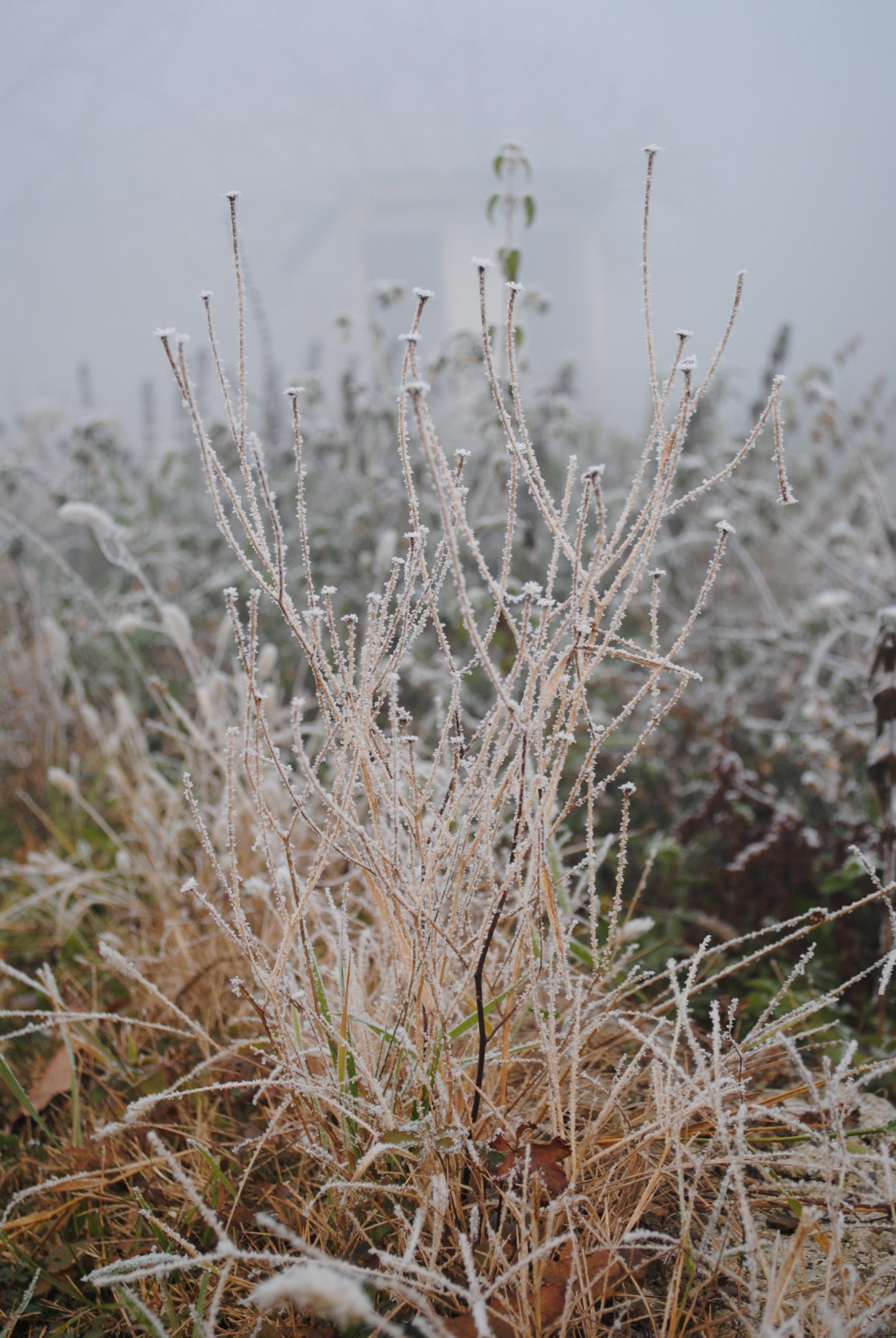

IMAGES – UNSPLASH (CLOCKWISE FROM TOP)
VERO PHOTOART, ANKHESENAMUN & ELENA KLOPPENBURG
Design & Maintenance Tips
[/dfd_heading][dfd_spacer screen_wide_resolution=”1280″ screen_wide_spacer_size=”20″ screen_normal_resolution=”1024″ screen_tablet_resolution=”800″ screen_mobile_resolution=”480″ screen_normal_spacer_size=”20″ screen_tablet_spacer_size=”10″ screen_mobile_spacer_size=”10″]- Short on Space? – Many of these perennials are planter friendly!
- Go Native – Choose native plants, trees and shrubs, preferably grown locally and without pesticide. Starting seeds at home is a great option to stay local and save money.
- Continuous Blooms – Select a variety of plants with different bloom times for a continuous bloom and pollen source. It’s really a win-win!
- Leave the leaves – Leaving autumn leaves in an area of your yard or spreading them out as a mulch in your autumn gardens creates habitat for pollinators and will break down to naturally fertilize your soil! Just don’t leave big leaf patches on your lawn as they will smother and kill your grass.
- Winter Habitat – If possible, leave hollow plant stems in your garden each fall as bees use them to lay eggs and overwinter. Besides, the seed heads on plants like echinacea add great winter interest to the garden. Wait for Spring temperatures to consistently reach 10 degrees celsius before cleaning up your garden.
Our Top 10 Favourite Pollinator Perennials for 2021
[/dfd_heading][dfd_spacer screen_wide_resolution=”1280″ screen_wide_spacer_size=”20″ screen_normal_resolution=”1024″ screen_tablet_resolution=”800″ screen_mobile_resolution=”480″ screen_normal_spacer_size=”20″ screen_tablet_spacer_size=”10″ screen_mobile_spacer_size=”10″]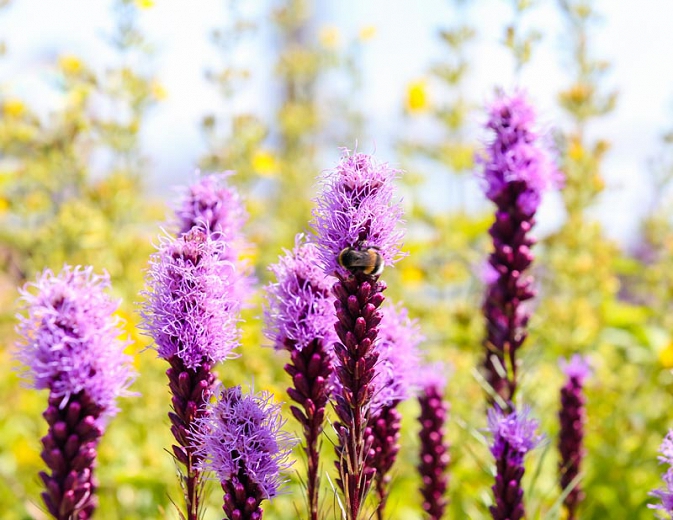
IMAGE – GARDENIA
Dense Blazing Star (Liatris spicata)
[/dfd_heading][dfd_spacer screen_wide_resolution=”1280″ screen_wide_spacer_size=”40″ screen_normal_resolution=”1024″ screen_tablet_resolution=”800″ screen_mobile_resolution=”480″ screen_normal_spacer_size=”40″ screen_tablet_spacer_size=”30″ screen_mobile_spacer_size=”20″]With showy fluffy blooms and lush grassy leaves, it’s no wonder this perennial is one of our favourites! It blooms from mid-summer to fall, then turns a rich bronze colour. It performs best in full sun (6+ hours) and is often visited by birds, butterflies and hummingbirds.
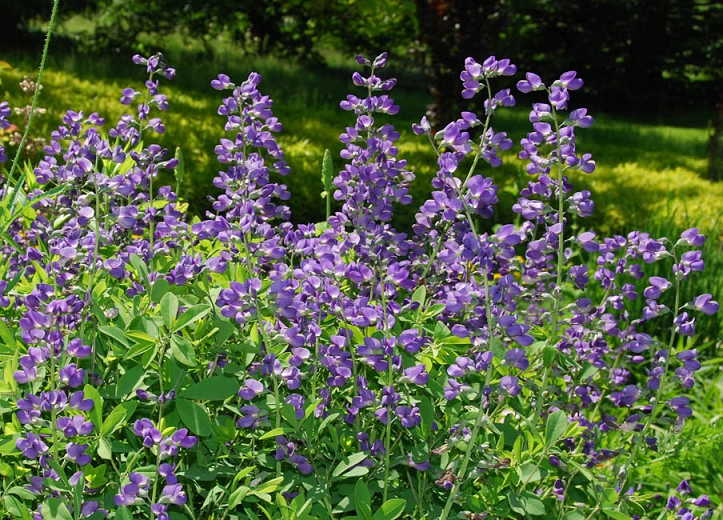
IMAGE – GARDENIA
False Indigo (Baptisia australis)
[/dfd_heading][dfd_spacer screen_wide_resolution=”1280″ screen_wide_spacer_size=”40″ screen_normal_resolution=”1024″ screen_tablet_resolution=”800″ screen_mobile_resolution=”480″ screen_normal_spacer_size=”40″ screen_tablet_spacer_size=”30″ screen_mobile_spacer_size=”20″]False indigo provides all-season interest, beginning in late spring to early summer with pea-shaped indigo blooms that if left untrimmed turn into interesting black seed pods that add winter interest. The foliage almost looks tropical like a eucalyptus leaf. It does best in full sun to part shade (4+ hours of sun).
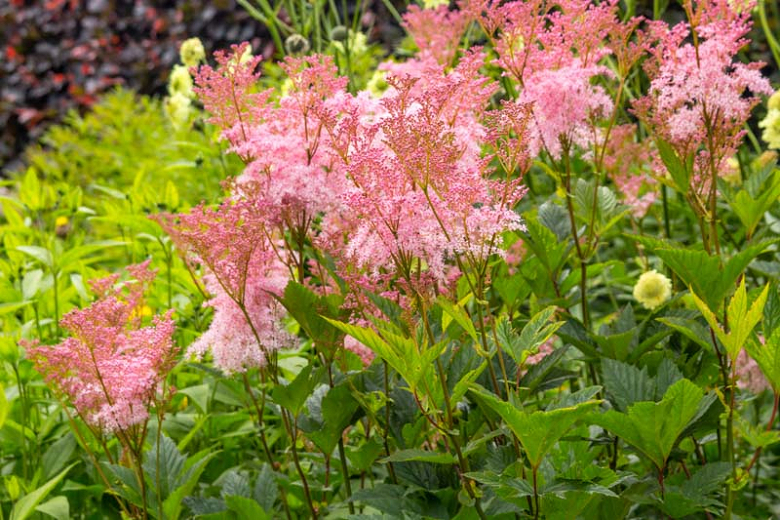
IMAGE – GARDENIA
Queen of the Prairie (Filipendula rubra)
[/dfd_heading][dfd_spacer screen_wide_resolution=”1280″ screen_wide_spacer_size=”40″ screen_normal_resolution=”1024″ screen_tablet_resolution=”800″ screen_mobile_resolution=”480″ screen_normal_spacer_size=”40″ screen_tablet_spacer_size=”30″ screen_mobile_spacer_size=”20″]The fragrant feathery clusters of pale pink flowers can reach heights of 6′-8′ tall! These stunning blooms last from early to late summer and are especially attractive to butterflies. This plant does best in full sun to part shade.
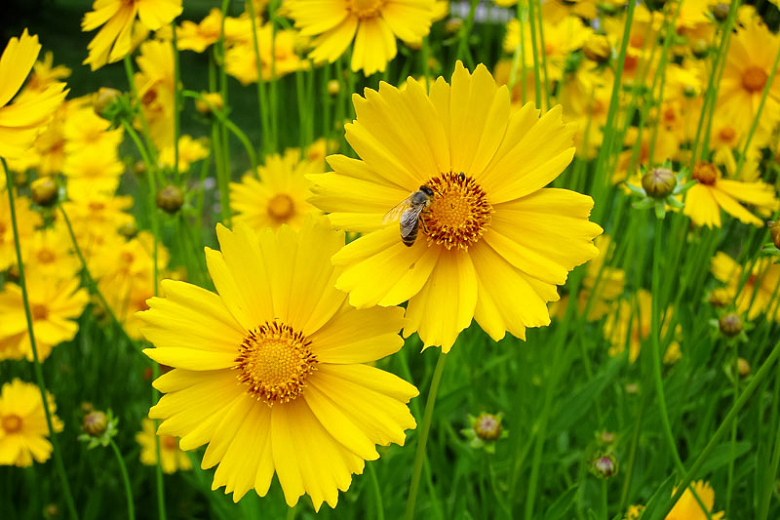
IMAGE – GARDENIA
Laceleaf Tickseed (Coreopsis lanceolata)
[/dfd_heading][dfd_spacer screen_wide_resolution=”1280″ screen_wide_spacer_size=”40″ screen_normal_resolution=”1024″ screen_tablet_resolution=”800″ screen_mobile_resolution=”480″ screen_normal_spacer_size=”40″ screen_tablet_spacer_size=”30″ screen_mobile_spacer_size=”20″]Doesn’t this bright sunny yellow flower just make you so happy? Their nectar is also attractive to a ton of pollinators including butterflies, moths, bees and beetles. It grows in small clumps with blooms that last from late spring to mid-summer. It does best in full sun to part shade.

IMAGE – INATURALIST
White Yarrow (Achillea millefolium)
[/dfd_heading][dfd_spacer screen_wide_resolution=”1280″ screen_wide_spacer_size=”40″ screen_normal_resolution=”1024″ screen_tablet_resolution=”800″ screen_mobile_resolution=”480″ screen_normal_spacer_size=”40″ screen_tablet_spacer_size=”30″ screen_mobile_spacer_size=”20″]This graceful wildflower features huge flat clusters of white flowers on tall stems. It also has a nice fern-like foliage. It blooms from early to late summer and does best in full sun. It’s great for attracting butterflies to your garden.
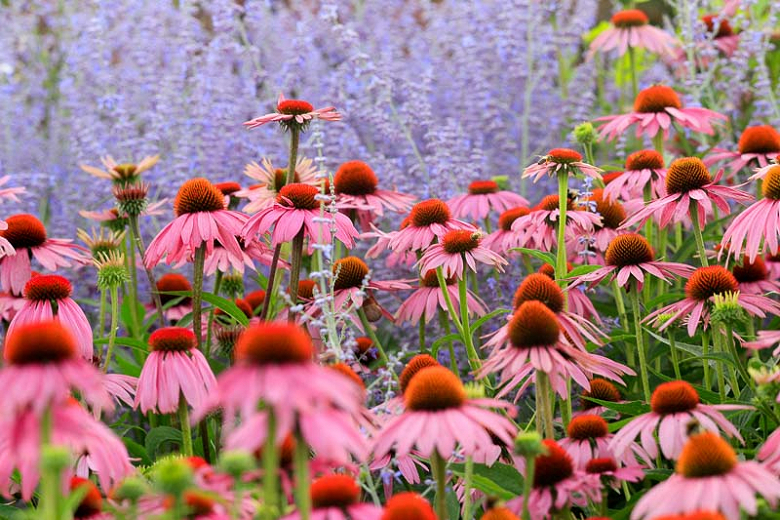
IMAGE – GARDENIA
Purple Coneflower (Echinacea purpurea)
[/dfd_heading][dfd_spacer screen_wide_resolution=”1280″ screen_wide_spacer_size=”40″ screen_normal_resolution=”1024″ screen_tablet_resolution=”800″ screen_mobile_resolution=”480″ screen_normal_spacer_size=”40″ screen_tablet_spacer_size=”30″ screen_mobile_spacer_size=”20″]This long-lasting garden staple has purple daisy-like coneflowers on a tall stem. It’s rich in nectar for butterflies and hummingbirds and if left to overwinter, the flowerheads become seed for birds. The seed heads also add winter interest to the garden. It does best in full sun to part shade.
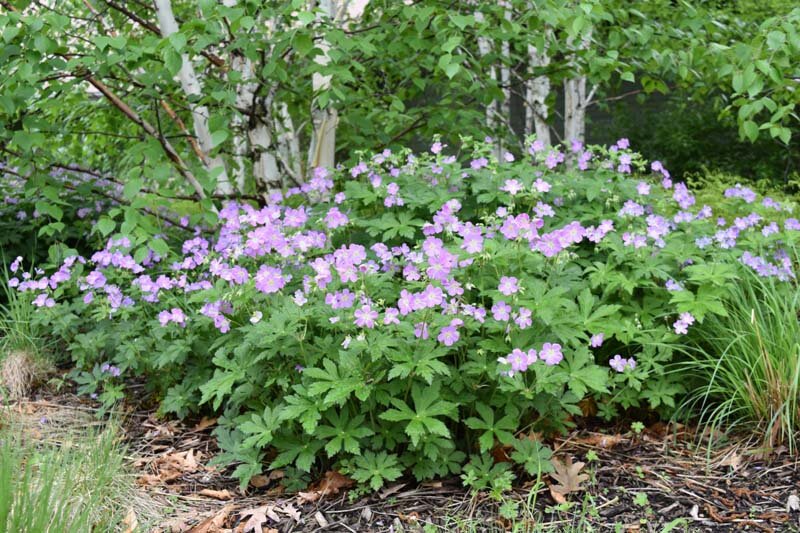
IMAGE – BLAZINGSTAR GARDENS
Spotted Geranium (Geranium maculatum)
[/dfd_heading][dfd_spacer screen_wide_resolution=”1280″ screen_wide_spacer_size=”40″ screen_normal_resolution=”1024″ screen_tablet_resolution=”800″ screen_mobile_resolution=”480″ screen_normal_spacer_size=”40″ screen_tablet_spacer_size=”30″ screen_mobile_spacer_size=”20″]This is a great option for those of you looking for a smaller plant that can be used as a garden border plant or groundcover. It prefers full sun to part shade and is attractive to bees, flies, beetles and butterflies, but not deer or rabbits. It produces pretty lilac-pink flowers from late spring to early summer and its foliage turns a bright red in the fall.
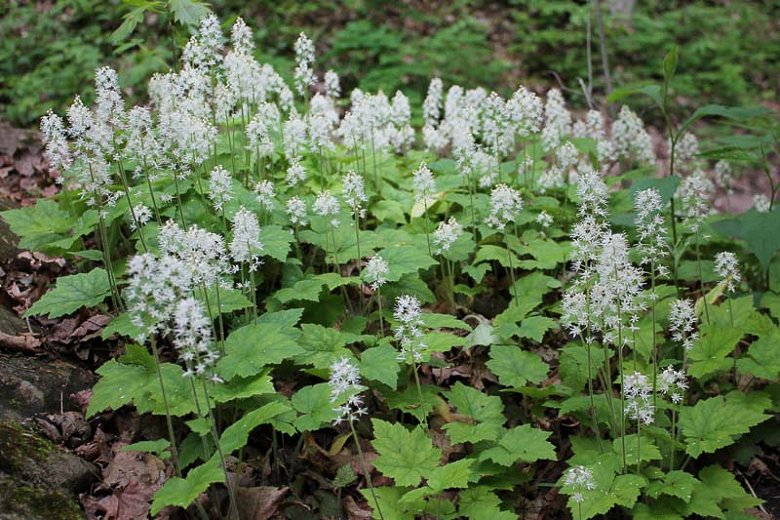
IMAGE – GARDENIA
Foam Flower (Tiarella cordifolia)
[/dfd_heading][dfd_spacer screen_wide_resolution=”1280″ screen_wide_spacer_size=”40″ screen_normal_resolution=”1024″ screen_tablet_resolution=”800″ screen_mobile_resolution=”480″ screen_normal_spacer_size=”40″ screen_tablet_spacer_size=”30″ screen_mobile_spacer_size=”20″]This is a great option for those difficult shady spots! Foam flower is another low-growing plant with multi-season interest. It performs best in part sun to full shade and blooms from late spring to early summer and then it turns a reddish-bronze colour in the autumn and winter.
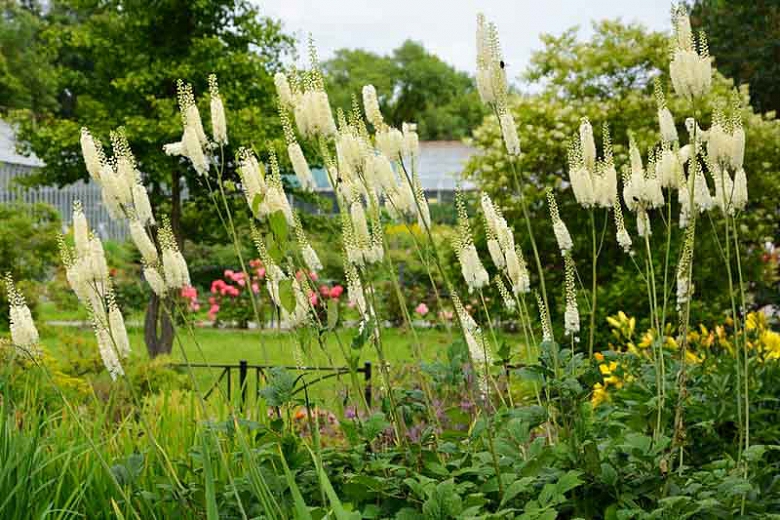
IMAGE – GARDENIA
Black Cohosh (Actaea racemosa)
[/dfd_heading][dfd_spacer screen_wide_resolution=”1280″ screen_wide_spacer_size=”40″ screen_normal_resolution=”1024″ screen_tablet_resolution=”800″ screen_mobile_resolution=”480″ screen_normal_spacer_size=”40″ screen_tablet_spacer_size=”30″ screen_mobile_spacer_size=”20″]A great accent plant for the late summer and fall, when its white fluffy spikes of fragrant flowers shoot up above the rest of the garden. It attracts birds and butterflies, but deer don’t care for it much. This perennial does best in part sun to full shade.
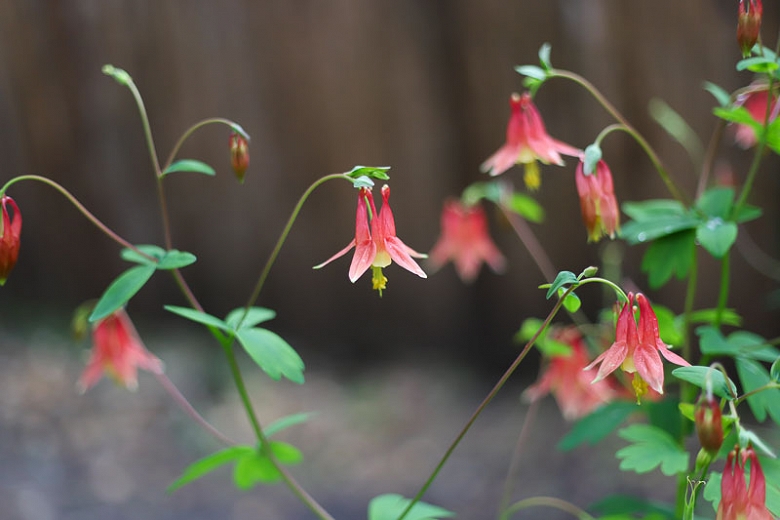
IMAGE – GARDENIA
Canadian Columbine (Aquilegia canadensis)
[/dfd_heading][dfd_spacer screen_wide_resolution=”1280″ screen_wide_spacer_size=”40″ screen_normal_resolution=”1024″ screen_tablet_resolution=”800″ screen_mobile_resolution=”480″ screen_normal_spacer_size=”40″ screen_tablet_spacer_size=”30″ screen_mobile_spacer_size=”20″]This plant features unique origami-like blooms from late spring to early summer. It prefers full to part sun and attracts hummingbirds and butterflies, but doesn’t interest rabbits or deer. In optimal conditions, this plant will self-seed and you’ll find it popping up throughout the garden, without being invasive.
Resources
[/dfd_heading][dfd_spacer screen_wide_resolution=”1280″ screen_wide_spacer_size=”20″ screen_normal_resolution=”1024″ screen_tablet_resolution=”800″ screen_mobile_resolution=”480″ screen_normal_spacer_size=”20″ screen_tablet_spacer_size=”10″ screen_mobile_spacer_size=”10″]Pollinator Garden Design
Gardenista’s Crash Course: https://www.gardenista.com/posts/native-pollinator-garden-crash-course/
David Suzuki’s Guide: https://davidsuzuki.org/queen-of-green/create-pollinator-friendly-garden-birds-bees-butterflies/
Native Plant Nurseries
Local Native Nursery Finder: https://can-plant.ca/where-to-buy.htm
Online: https://onplants.ca/
Native Plant Directories & Maintenance Guides
Native Wildflower Database: https://www.wildflower.org/plants-main
Pollinator Partnership: https://pollinatorpartnership.ca/en/ecoregional-planting-guides (See the Lake Erie Lowlands Ecoregion guide for the GTA)
City of Toronto Guidelines: https://bit.ly/2Omxyvs
Interested in adding a pollinator garden to your landscape?
We’d love to help!

Our Favourite Pollinator Plants for Earth Day
meg & kennedy © 2024 | Site & Branding Designed by Monarch Design Co.